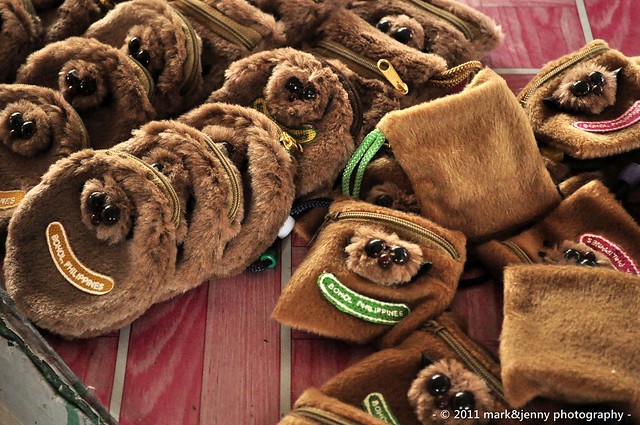Bohol
Photo: www.matt-gibson.org
Bohol was first settled by Australoid people, like the rest of the Philippines. They still inhabit the island today and are known as the Eskaya tribe, their population also was absorbed into the Austronesian or Malayo-Polynesian peoples who later settled the islands and form the majority of the population.
Photo: www.wonderingwanderer.com
Bohol is the tenth largest island in the Philippines. It is one of the bigger islands in 'the Visayas', the group of islands in the center of the Philippines. Bohol is, together with 72 small islands around the main island, an island province of 4117 square kilometer. Agriculture, together with the tourism, are the two dominating economic sectors of the main island Bohol.
Origin of the Chocolate Hills

Geologists think that the specific shape of the hills is caused by the influences of the weather during millions of years. The breaking down of the upper layers of the limestone formations, followed by the erosion processes, resulted in these remnants in the shape of cones. In the rainy season the Chocolate Hills are green. In the dry season of each year, the vegetation on the hills gives the landscape a brown colored view, a reason to call them "Chocolate Hills".
The smallest monkey

A reason to visit the main island Bohol, is that Bohol still has tropical rainforests in the higher parts of the island. Moreover, If you want to meet the smallest monkey on earth, the Tarsier, you'll have to visit Bohol! The average size of this little creature is between 90 to 160 mm (3.5 to 6.25 inches). The weight is between 70 to 165 grams.
Negros Oriental

Photo: www.touroriental.com
Negros Oriental is host to dozens of festivals each year. Among the most popular and well attended are Buglasan, Pinaskuhan, and Pasayaw.
Points of interest:

Twin Lakes of Balinsasayao - Tucked away in the remote hills of Sibulan are the Twin Lakes of Negros namely Lake Balinsasayao and Lake Danao. A good 45-minute drive on a winding road will lead you up to the extensive rainforest ecosystem that surrounds the lakes. Activities like kayaking, horseback riding, and trekking can be done.

Dolphin and Whale Watching in Bais City - The Bais City Tourism Council generally oversees and organizes the tours. The cruises take you out to Tañon Strait, the natural habitat of dolphins and pygmy sperm whales. Out on the sea, the boat comes to a stop and the guests are told to clap their hands or whistle to encourage the dolphins to play. True enough, you could view them leaping in the air in pairs or groups. The whales prefer to emerge when the atmosphere is calm and quiet.

Manjuyod White Sand Bar - During low tide, a 7-kilometer stretch of pristine white sand seems to float right in the midst of Bais Bay’s sparkling blue waters. Known among the locals as White Sand, this strip of beach is a popular destination for families on vacation. It is also a stopover point for dolphin and whale watching cruises of Bais City because of its proximity to Tañon Strait.

Lake Balanan - Unspoiled natural beauty that has been preserved by time, Lake Balanan is nestled in the mountains of Siaton. Development projects are ongoing at the site.

Mt. Kanlaon - The stately 2600-meter high mountain draws the boundary between Negros Oriental and Negros Occidental and is the highest peak in the Visayas Region and is one of the five highest in the Philippines. It has been declared the most active volcano in the province.


















